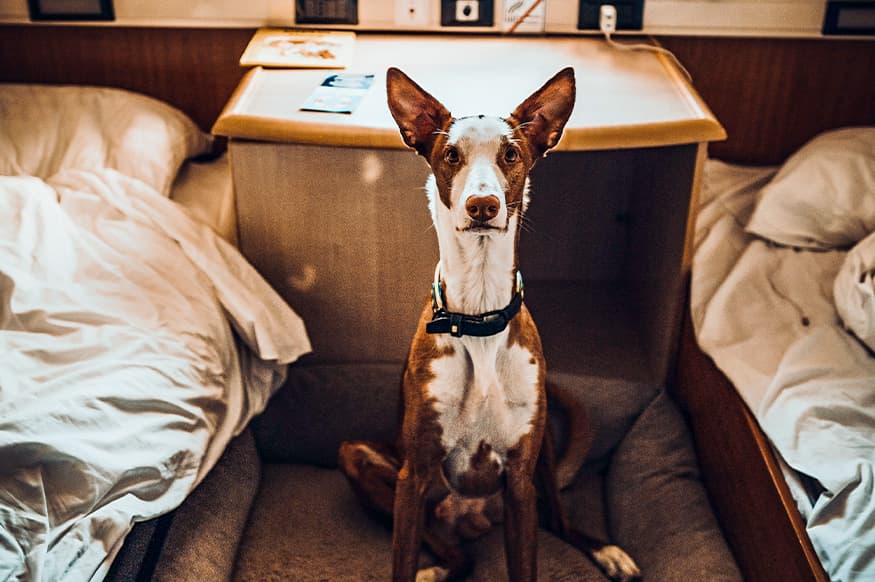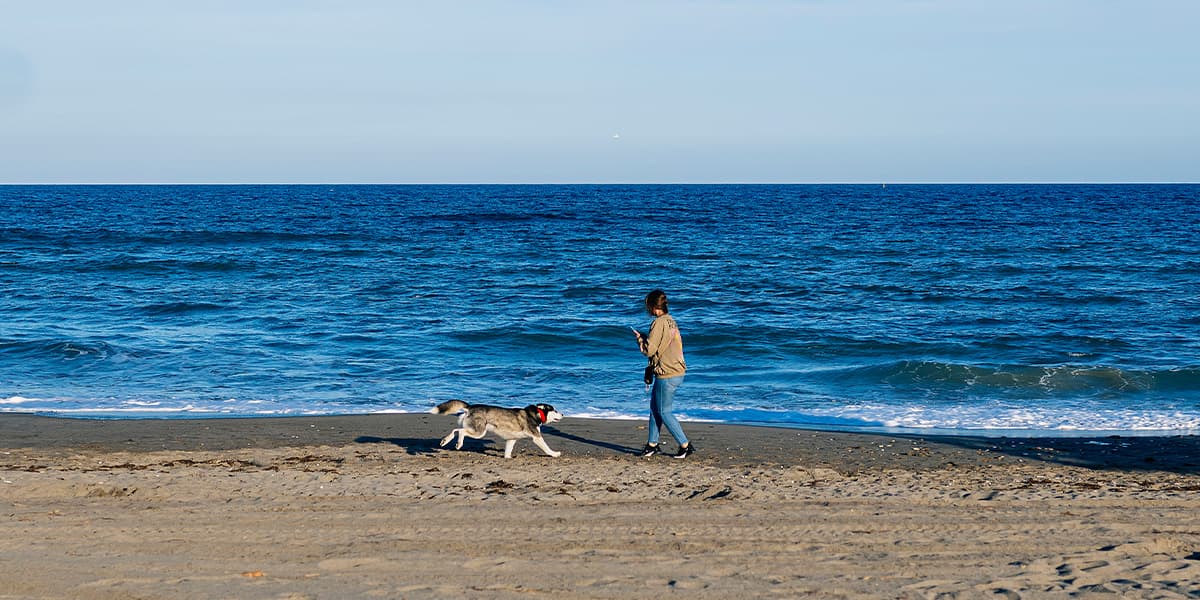1. Visit the vet
Even if your dog seems perfectly healthy, a vet check-up before you travel is crucial. Discuss your plans with your vet, update any necessary vaccinations, and make sure your dog’s European Pet Passport (if applicable) is up to date. Your vet can also prepare a first-aid kit for your pet, including remedies for upset stomachs, wound care supplies, and tools like tick removers. For long trips, you might also need anti-nausea medication. And don’t forget to map out veterinary clinics along your travel route for peace of mind.
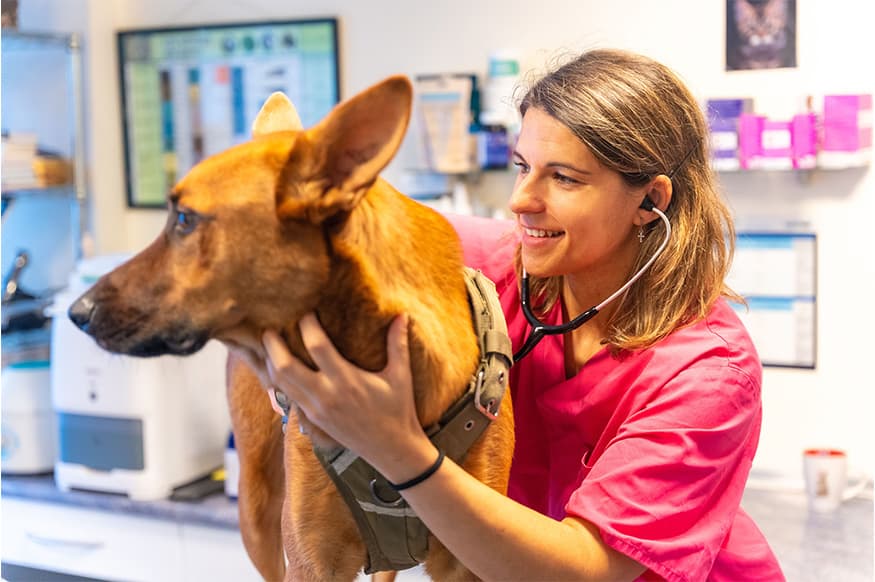
2. Know the rules of your destination
Before you pack your bags, it’s important to research pet import requirements for your destination and any countries you may travel through. For example, in the EU, dogs need to be microchipped, have up-to-date rabies vaccinations, and carry a European Pet Passport. Some countries, such as Finland and Norway, also require treatment against the tapeworm Echinococcus multilocularis, which must be noted in the pet passport.
Additionally, some laws might surprise you. For example, in Germany, letting your dog roam freely inside a car can lead to hefty fines, while in Poland, it’s illegal to leave a dog unattended in a car.

3. Invest in safety gear
While a dog with its head out of the car window might look adorable, it’s not safe or legal in many places. Always secure your dog with a harness in the back seat or place them in a crash-tested carrier in the boot of your car. Ensuring their safety is paramount, and it will help you drive with fewer distractions.
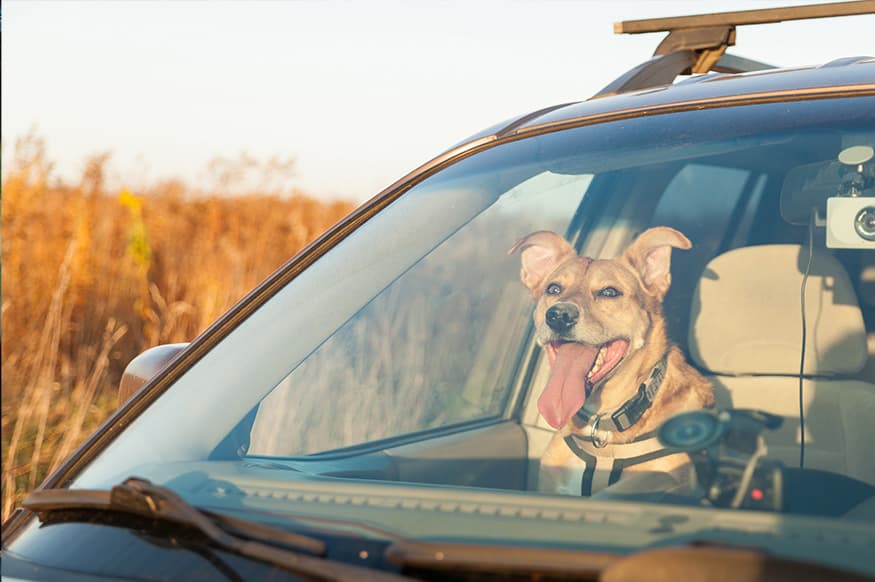
4. Tire them out before travelling
A tired dog is a calm dog. Before setting off on a long drive or boat ride, make sure your dog gets plenty of exercise. This could mean a long walk, a frisbee session, or even an agility training beforehand. Not only will this burn off excess energy, but it will also make them more likely to rest during travel.
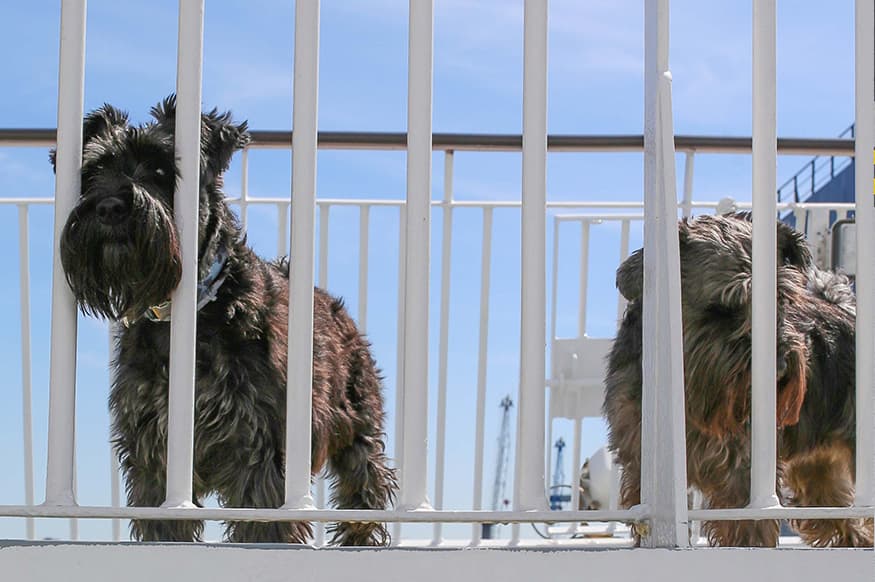
5. Pack familiar foods and treats
To avoid tummy troubles, bring your dog’s regular food for the first few days of your trip. It’s also wise to carry more than enough treats to reward good behaviour or offer comfort in new environments. If your dog needs a distraction during quiet moments, pack long-lasting chews or puzzle toys filled with treats for mental stimulation. Photo about dog chilling at the ship’s cabin
6. Bring comfort items from home
Familiar scents can help calm your dog in unfamiliar places. Instead of buying new toys, blankets, or beds, bring along their favourites from home. Snuffle mats and treat-dispensing toys are perfect for keeping them entertained and engaged, particularly during downtime on a ferry or in a hotel room.
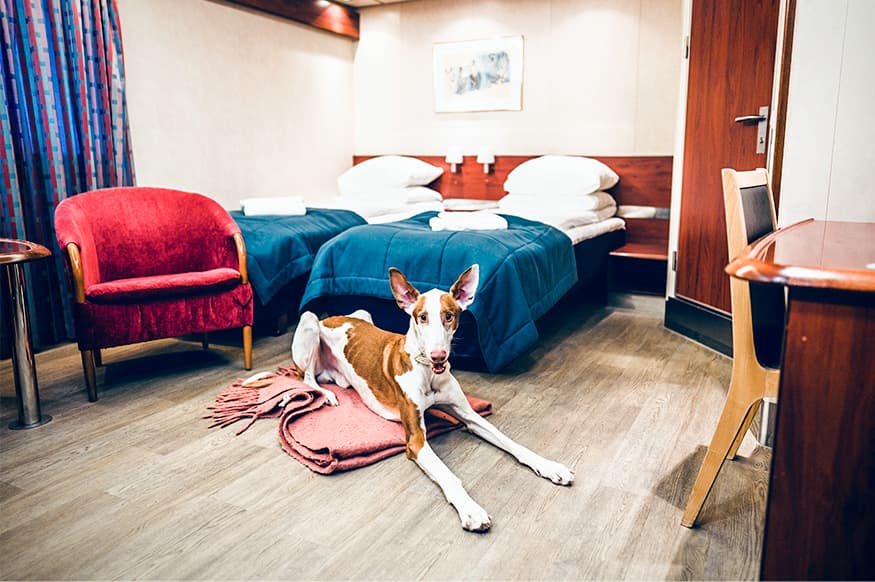
7. Plan for regular breaks
Dogs need breaks too! If you’re driving, plan plenty of stops along the way for bathroom breaks, stretching, and playtime. Research dog parks or pet-friendly rest areas along your route to make these breaks more enjoyable. If taking a ferry, check if there are designated areas where your dog can stretch their legs during the trip.
